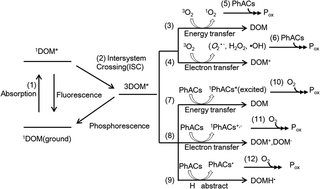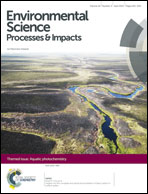Photo-transformation of pharmaceutically active compounds in the aqueous environment: a review
Abstract
In the past few years, the fate and transportation of pharmaceutically active compounds (PhACs) in aqueous environments have raised significant concerns among the public, scientists and regulatory groups. Photodegradation is an important removal process in surface waters. This review summarizes the last 10 years (2003–2013) of studies on the solar or solar-simulated photodegradation of PhACs in aqueous environments. The PhACs covered include: beta-blockers, antibiotics, non-steroidal anti-inflammatory drugs (NSAIDs), histamine H2-receptor antagonists, lipid regulators, carbamazepine, steroid hormones, and X-ray contrast media compounds. Kinetic studies, degradation mechanisms and toxicity removal are the three major topics involved in this review. The quantum yield for the direct photolysis of PhACs and the bimolecular reaction rate constants of PhACs with reactive oxygen species (ROS), such as the ˙OH radical and singlet oxygen, are also summarized. This information is not only important to predict the PhAC photodegradation fate, but also is very useful for advanced treatment technologies, such as ozone or advanced oxidation processes.

- This article is part of the themed collection: Aquatic photochemistry

 Please wait while we load your content...
Please wait while we load your content...